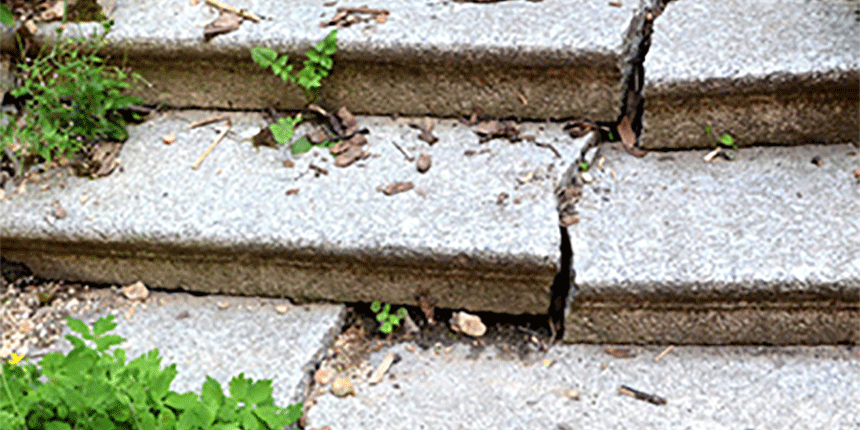Inspection and maintenance
06 August 2019
How to identify and manage slips and trips through proper inspection and maintenance

Assessing slip and trip risks
Operating a robust system of inspection of floor surfaces or coverings, paths, walkways and other pedestrian routes is important in preventing slips and trips. This sits alongside effective arrangements for reporting, recording and correcting (or providing temporary safeguards for) any defects identified in a timely manner.
Good maintenance is also essential. Flooring can become damaged and uneven over time presenting a trip hazard. Lighting can become defective, making trip hazards less easy to spot.
Advising staff/volunteers on how to report any defects and involving them in inspections if necessary is also important. This way, they are more equipped to keep themselves safe, and advise visitors where and when necessary.
Slips and trips in historic properties
Some hazards are unique to historic properties, created by their design. Others can result from wear and tear over centuries. It may not be possible or desirable to change some of these characteristics, which might include worn stone staircases, uneven or slippery flooring surfaces, stone paving and old drainage systems that are now inadequate.
For some, constrained budgets can have a significant impact on the maintenance and upkeep of premises. In some cases, a lack of dedicated maintenance staff may also be a limitation. The extent of the maintenance work that can be done to correct a trip hazard may be limited by any consent or planning requirements. This may be the case for listed buildings or scheduled monuments. To reduce the risk of slips and trips in such instances, alternative precautions will need to be put in place.
Top tips for preventing slips and trips
Here are some solutions and considerations to overcome these challenges:
- Identify all walkways and other access routes that require periodic inspection and maintenance.
- Implement a regular schedule of maintenance and inspection to keep on top of issues before they become larger, more hazardous, complex and more costly.
- Prioritise the highest risks and determine a timescale for fixing each one.
- For hazards that can’t be fixed immediately, highlight the hazard clearly or cordon it off with barriers if possible.
- Lay paths over cobbles or fill drainage channels with gravel.
- Involve staff and volunteers in your inspections if practicable – they may have spotted things you have not.
- Manage any contractors brought onsite to complete maintenance work and ensure that any precautions necessary to protect those involved in the work and others are taken.
- Provide adequate training so that someone onsite can complete any necessary inspections and has the correct level of competency and confidence to complete assessments.
- Revisit any risk assessments you may have completed periodically to check that they remain relevant given any findings from the checks you have made.
- If an accident should occur, keep appropriate records of any investigation, they may be useful if a claim arises.
Always consider...
- If your precautions are adequate given your circumstances
- Completing a risk assessment if you need one to comply with health and safety law
- Providing information and training for any employees and volunteers on what they need to do
- Making periodic checks that your arrangements and precautions remain adequate
- Documenting your arrangements and responsibilities for preventing slips and trips, perhaps as part of your health and safety policy to illustrate your awareness of slip and trip risk and all you have done to prevent an incident
- Highlighting challenging areas in your visitor and user information.